1930’s German Mandolin Top Replacement
This is a restoration of an old 1930-40’s East German ‘Trade’ Mandolin from my repair archive completed in 2003.
Of sentimental value to the owner this instrument presented in a very bad state of repair. This was a “trade” instrument, something that would be made in a factory for music or department store sale as opposed to an individual maker. Its hard to see from the photos but the top had badly buckled around the sound hole and was severely over sanded in many places resulting in it becoming unplayable. The other main issue was the back had several large cracks and was separating from the sides. For want of a better description, the internal woodwork and bracing were more “agricultural” than fine craftsmanship.
My brief from the owner was to make it playable with modern strings so it could be used as opposed to hung on a wall as a decoration. The collectible value of this instrument is very low – even in in good condition so it made sense to make it as playable as possible whilst retaining its visual charm.
The overall approach was to restore completely by making a new top and to transfer the original top inlay from old to new. This is a challenge in and of itself. To flatten a lifting inlay, temporarily support it and re inlay it whilst loosing as little thickness as possible when the total thickness is only 0.5mm to start with.
The back and top were removed, first the back was disassembled and all cracks re glued, and then re braced with quality quartered spruce a opposed to the low grade pine used originally. With the back replaced, the linings were added to to allow good gluing surface for the new top. Turning attention to the top, the inlay was cut out of the old top, flattened and glued to a temporary substrate before being re inlayed into the new top.
The top was then re braced with an X pattern to allow it to be used with modern strings, the pattern arrived upon to approximate the stiffness of a graduated arched top. After re assembly and binding, the fretboard was added to to establish an appropriate neck/string angle, and a new bridge made ion the original style.
With Brazilian Rosewood back/sides and all new European spruce top and bracing it functioned and sounded amazing whilst retaining the original look and character. It has been in service since the re build for many years and still going strong.

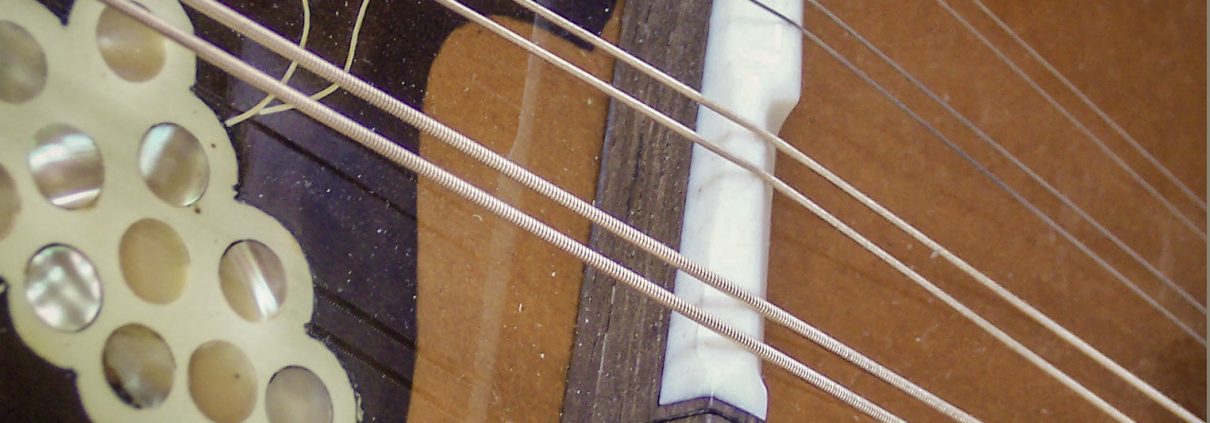
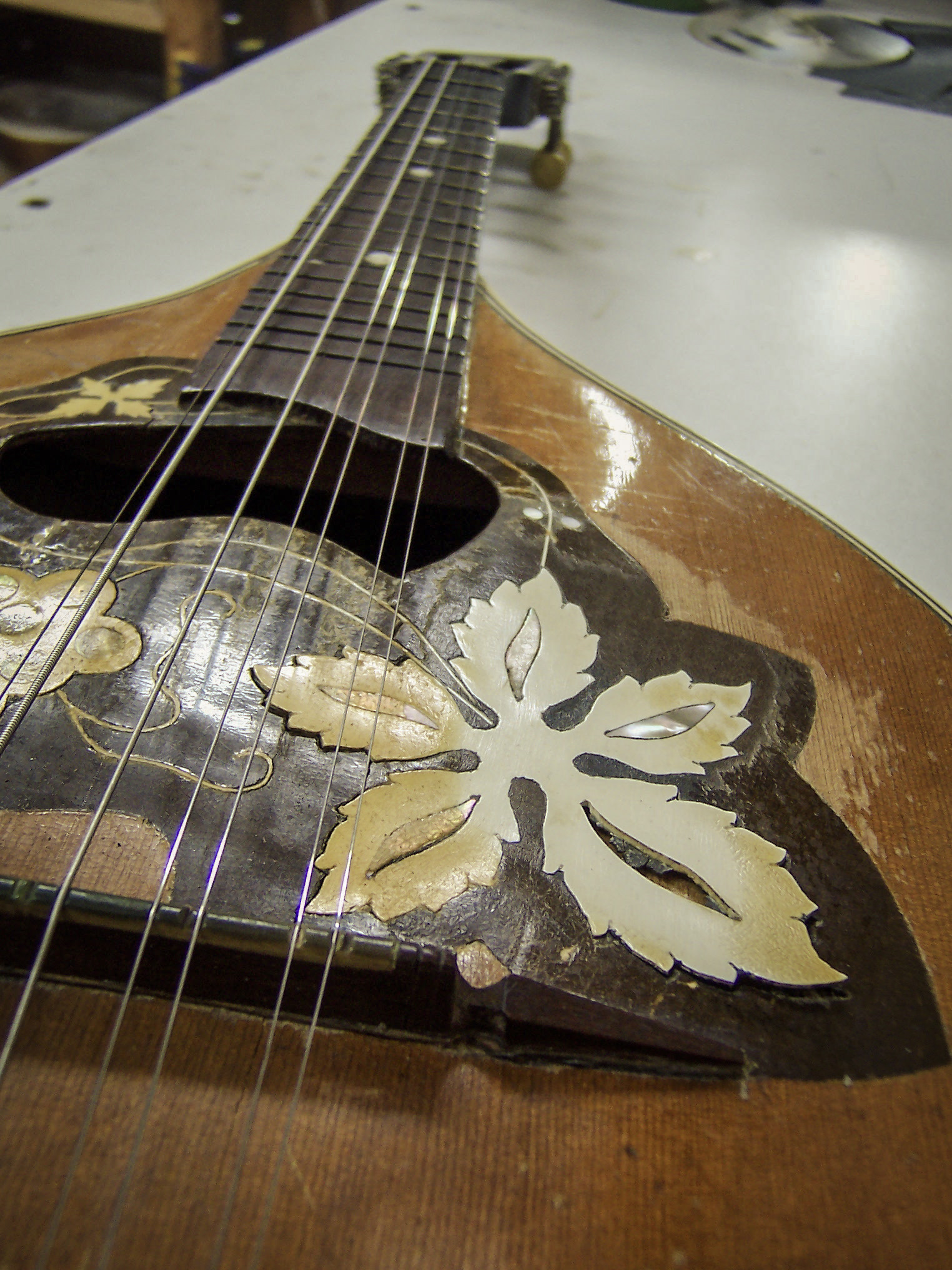
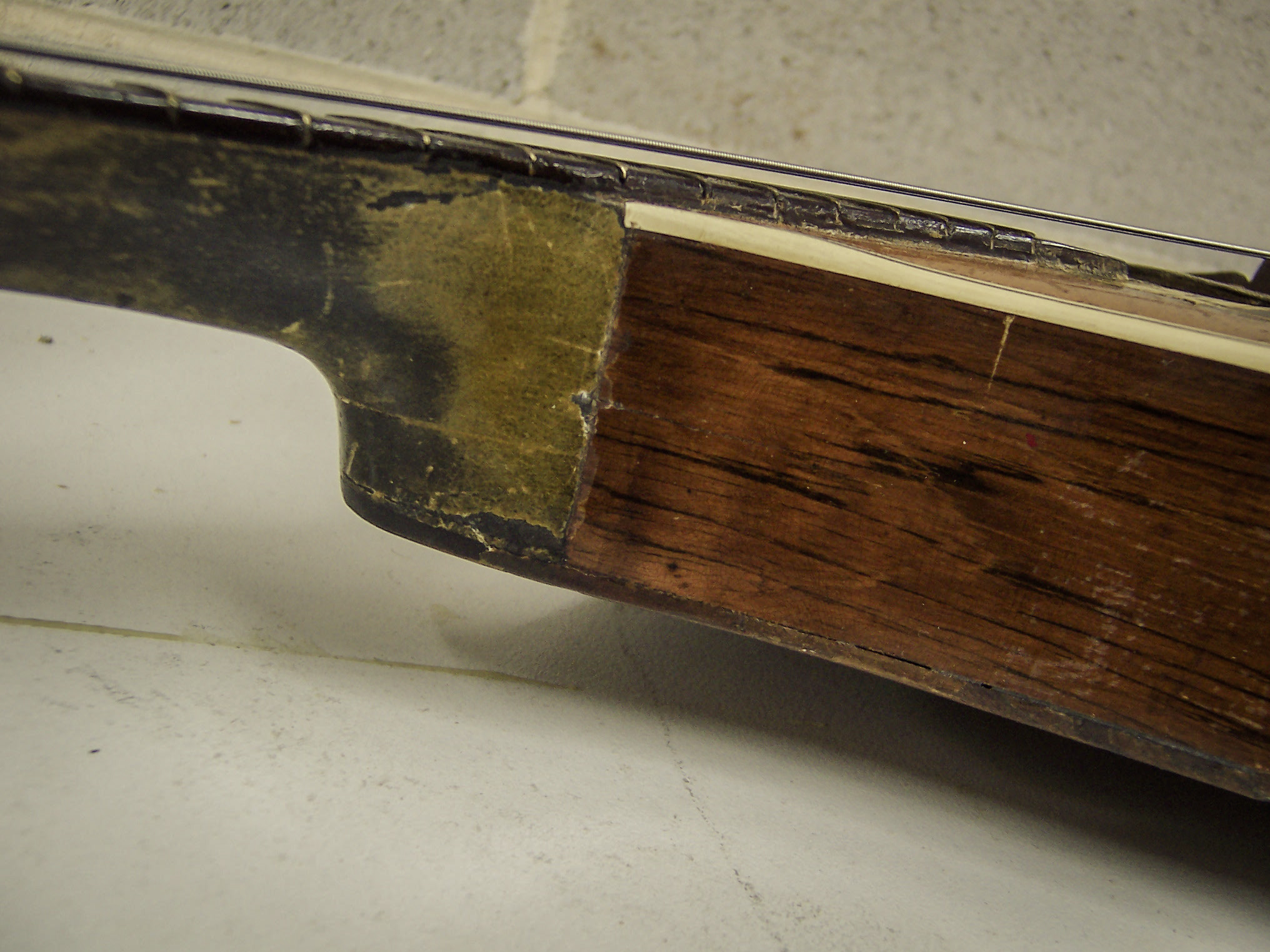



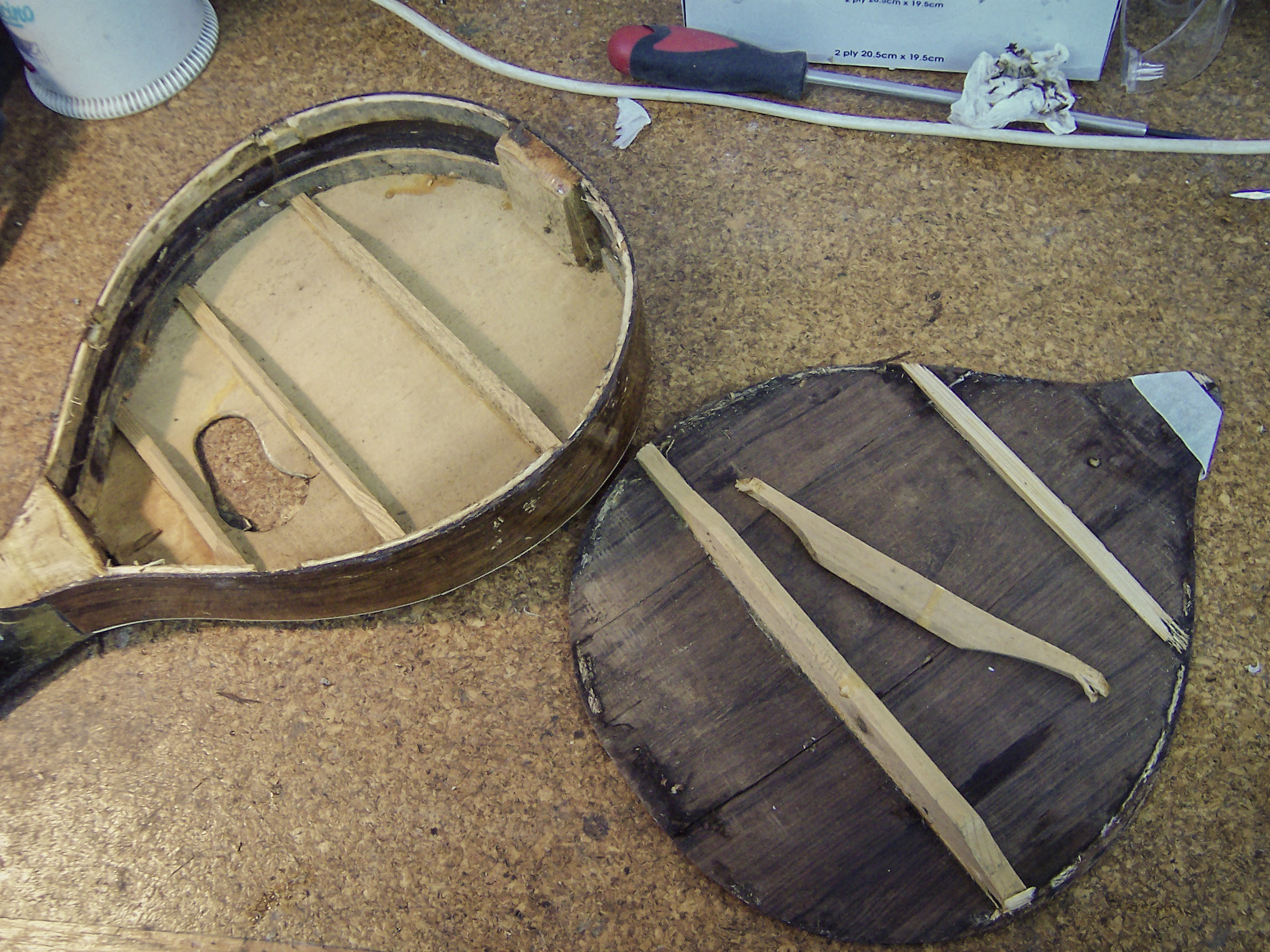
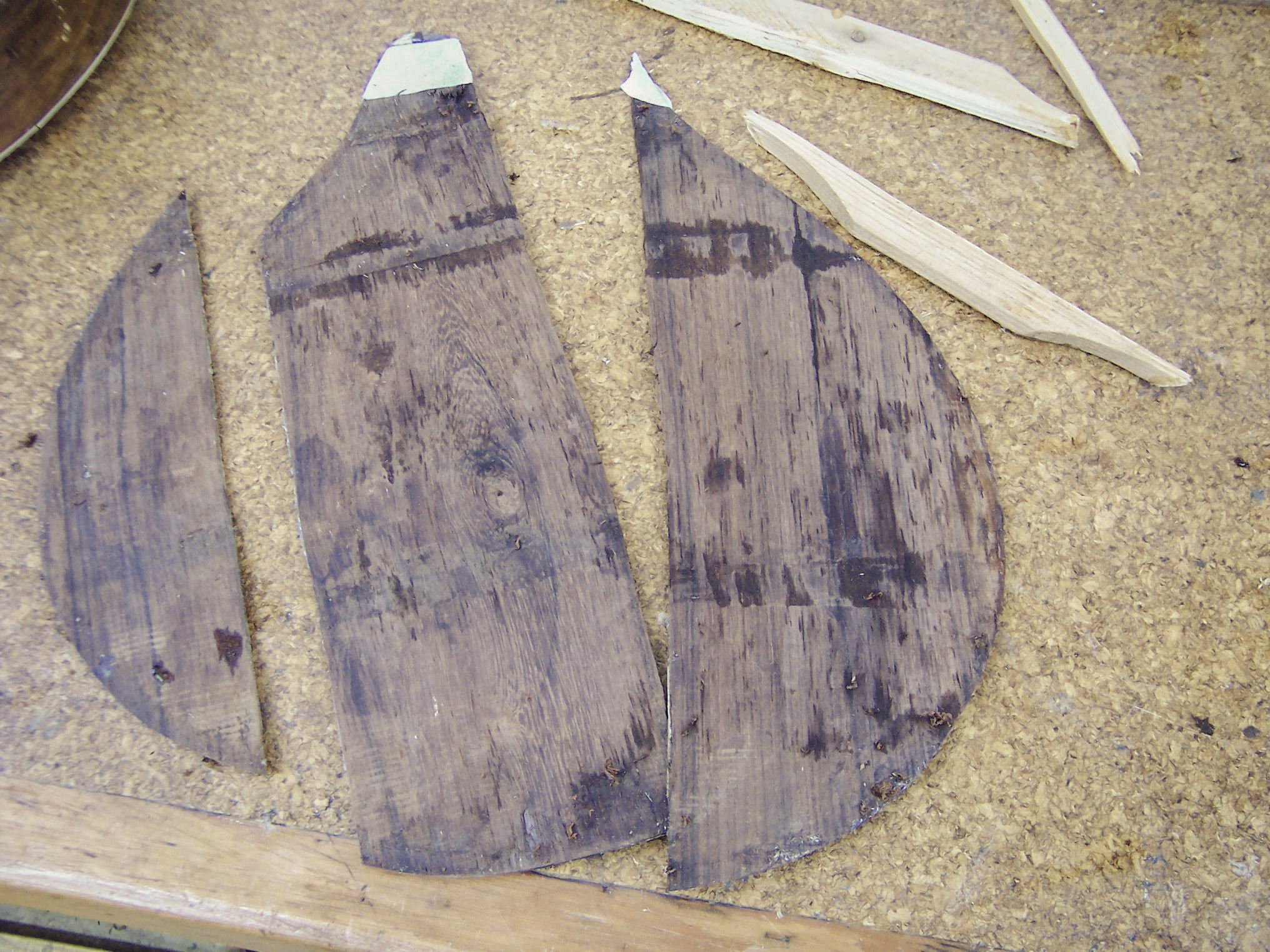
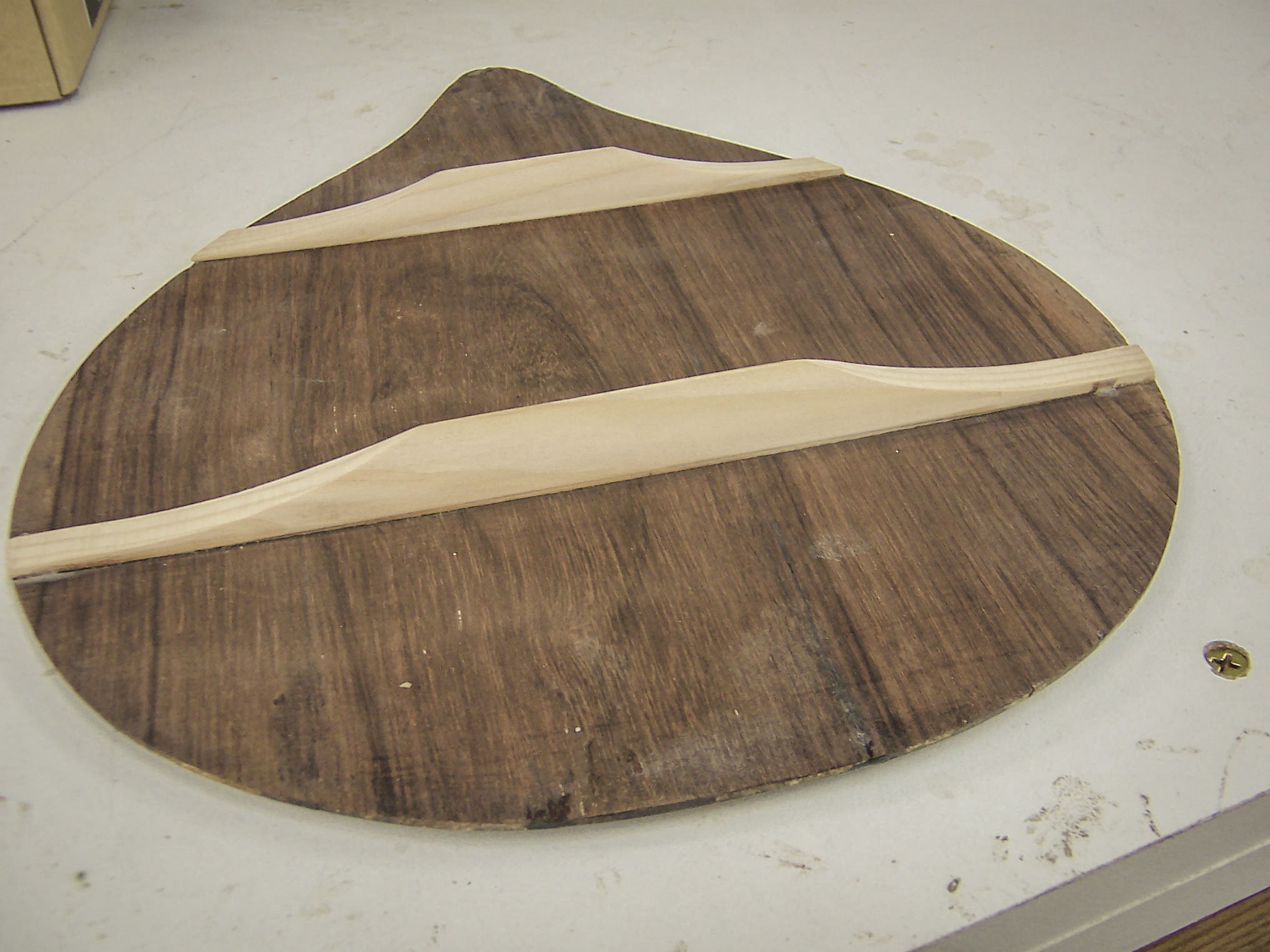
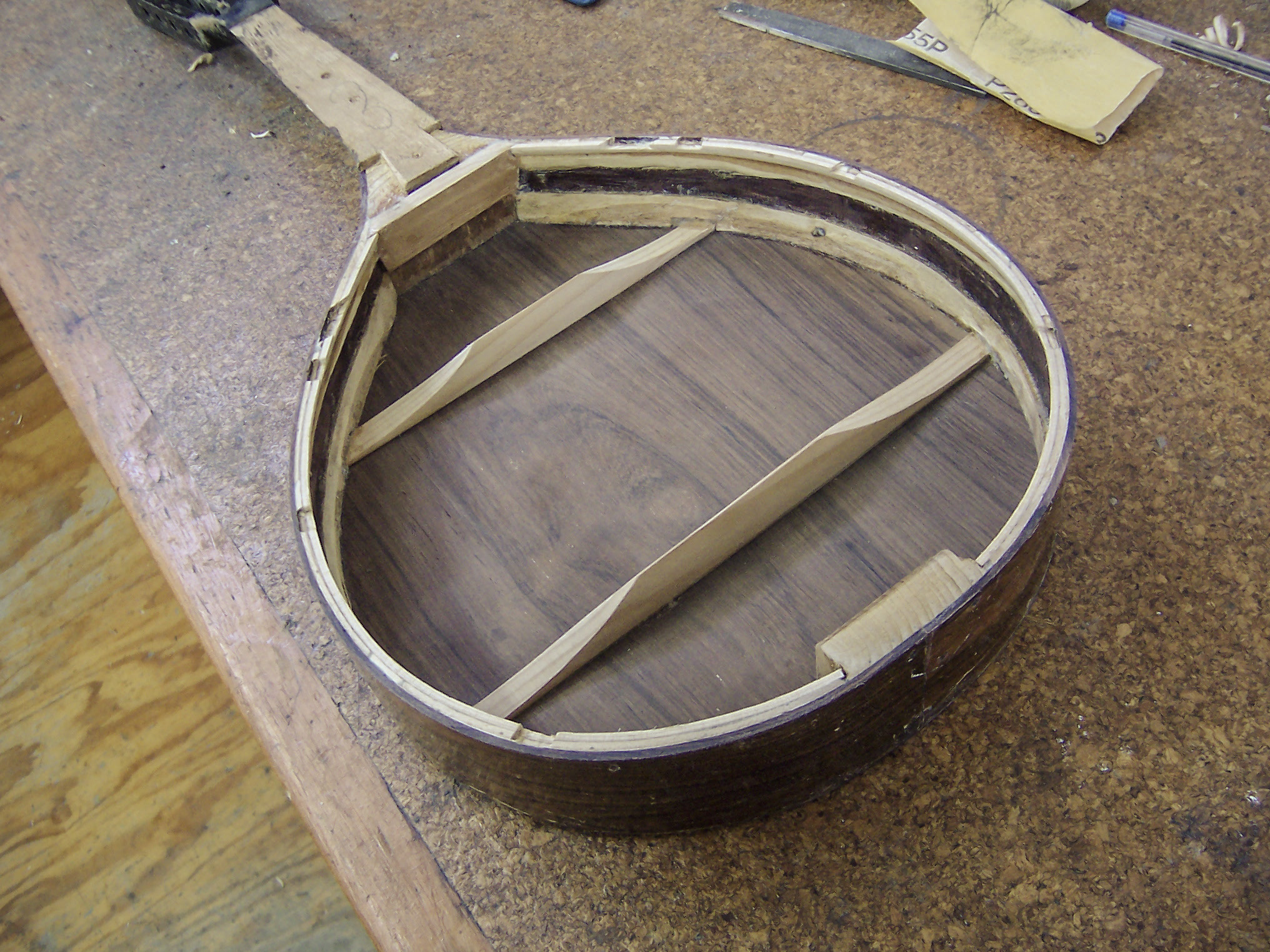

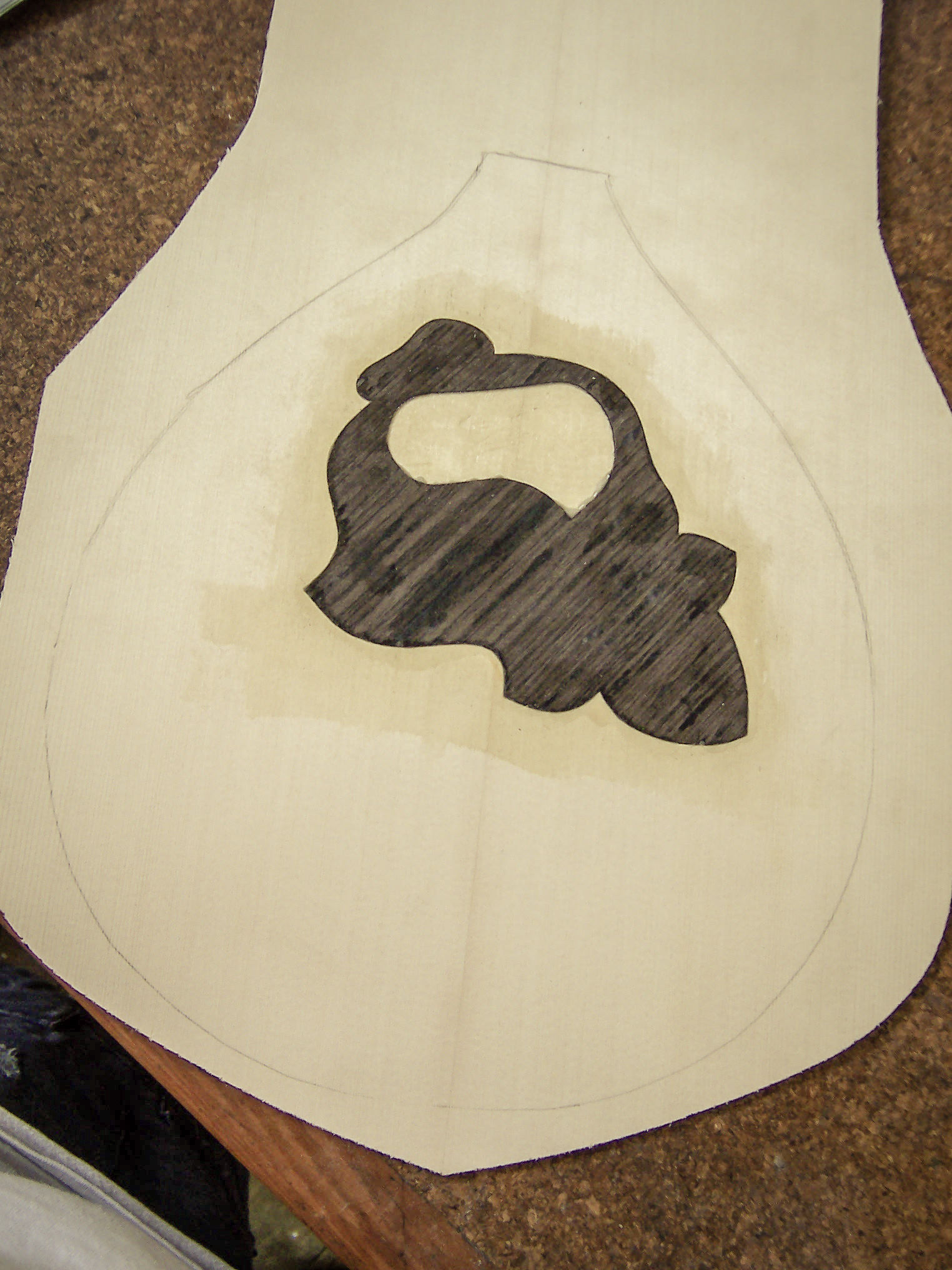





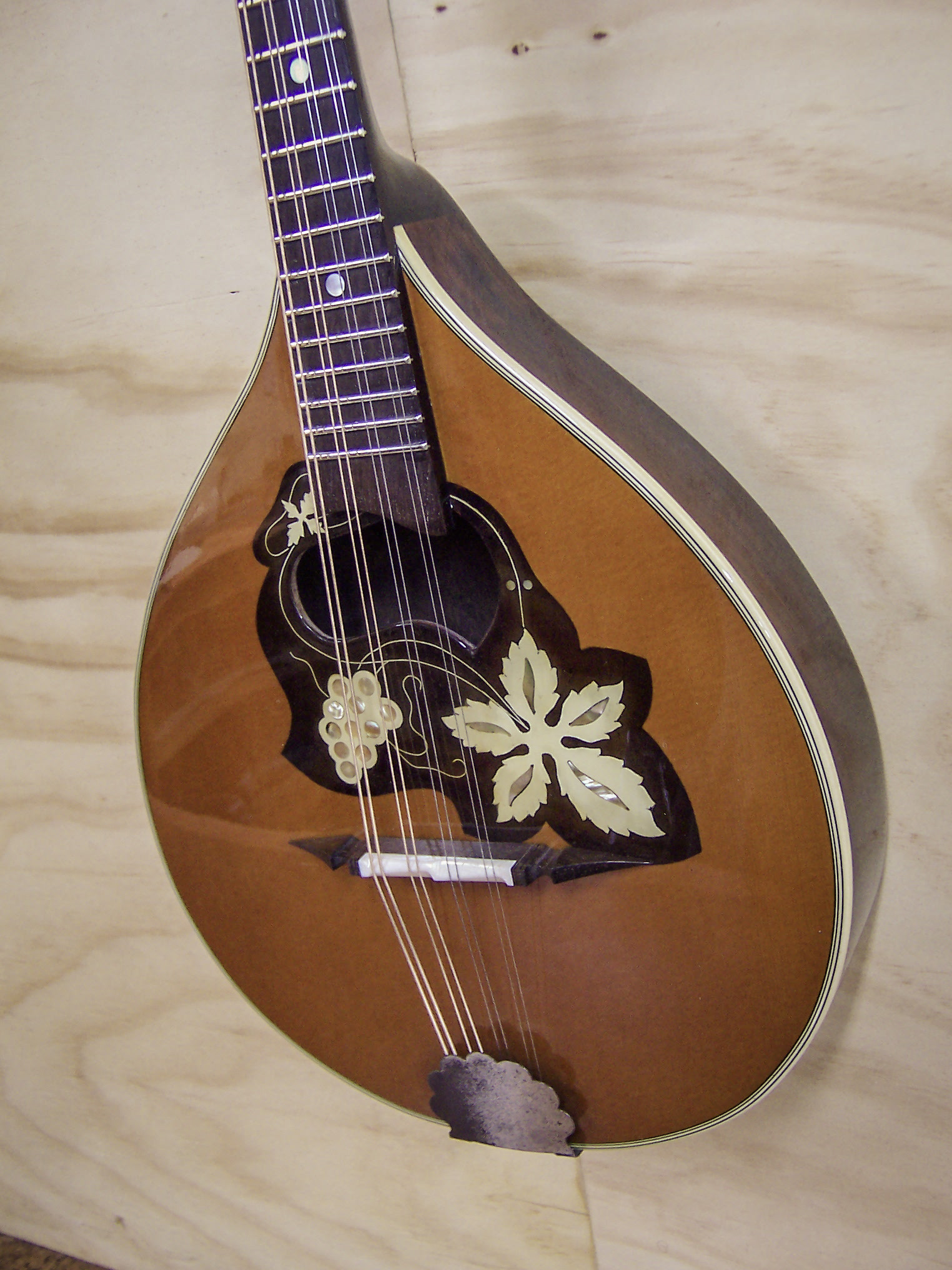
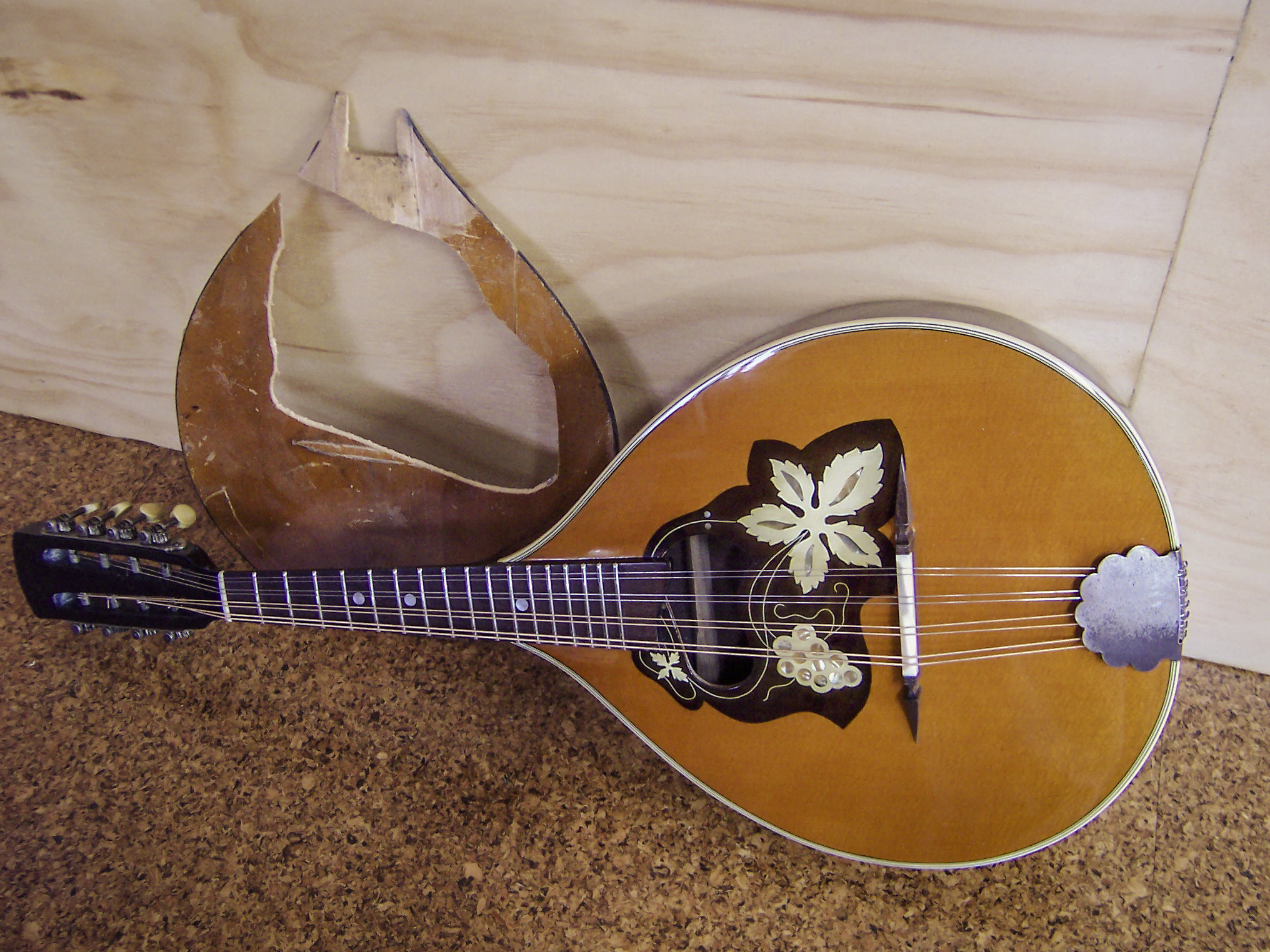
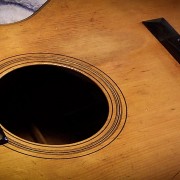
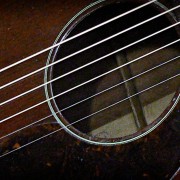
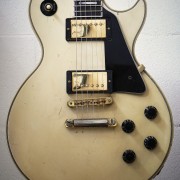

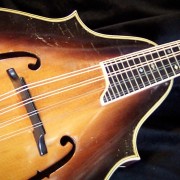
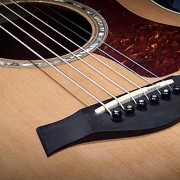
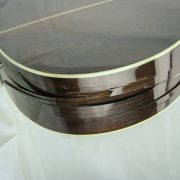
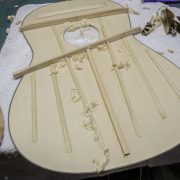


Good evening from Watertown, WI. USA,
I recently acquired a 1930-40’s Trade Mandolin. It is in the Portuguese Style. I had to tape the Mother of Pearl on the pickguard like I den you did, and I am not a Luthier, just a musician and collector.
The back has the “Star” model.
I found a photo of mine from a 1954 Catalog of Kurt Gropp that is on the Internet. Mine is the Model 5112, and is the last one on the right on the front row.
I at this time have no idea who made this fine Mandolin, but I assume it was sold by Kurt Gropp Company.
Your work on this Mandolin is exquisite.
Thanks for your comments Clifford, I checked out that catalogue, this may have been a by a company called Vogtlandsperle who apparently made for this catalogue.